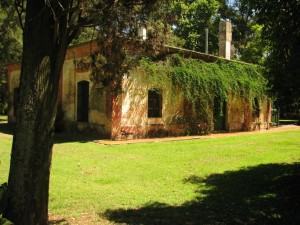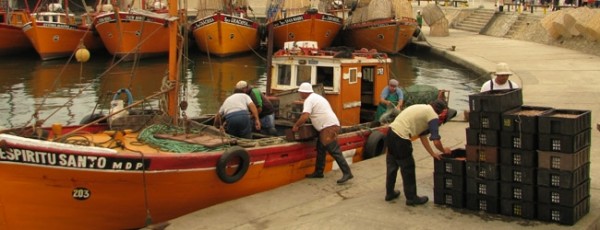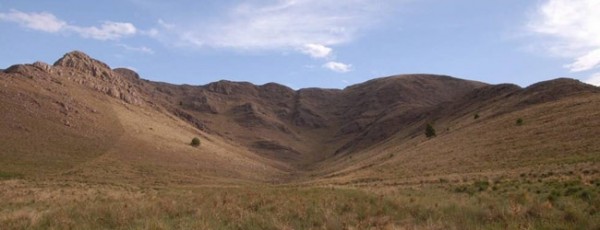Buenos Aires Province: Filming on location on a great film set
The province of Buenos Aires is known for its fields, a land of gauchos. Its endless horizon leads us to think about nothing but the vastness of the humid pampas. Buenos Aires is as large as Italy or Greece, yet it is just one province within the whole Argentine territory.
What springs to mind whenever someone thinks of Buenos Aires are, no doubt, huge sown fields, cows and horses, and endless extensions of flat areas of land. But that’s not all there is.
 Buenos Aires is where most of the audiovisual projects arriving in the country are shot because all kinds of settings are available here. There are nearly 310,000 square kilometres of rivers, towns, jungles, seas, fields and large urban areas with various architectural styles. Its locations are so diverse that they can be adjusted for everything, from a Western to a futuristic city.
Buenos Aires is where most of the audiovisual projects arriving in the country are shot because all kinds of settings are available here. There are nearly 310,000 square kilometres of rivers, towns, jungles, seas, fields and large urban areas with various architectural styles. Its locations are so diverse that they can be adjusted for everything, from a Western to a futuristic city.
The province begins at the western boundaries of the City of Buenos Aires. Its beltway is called General Paz and from there on you are into the suburbs. Here, houses are more spacious and over the last ten years urban citizens have chosen to move out to this area, although most of them work downtown.
Many municipalities cover this area. Some of them offer English architecture, as they were built along with the railway. Others have lost their architectural identity, but it is pleasant to see how the landscape ranges from semi-rural areas to private neighbourhoods with luxurious houses where most commercials are shot. This area of the suburbs encompasses a radius of some 50 kilometres around the city and continues to expand.
Beyond those urban areas there are towns, old bars and grocery stores which denote another kind of rural life. You can come across estates dating from the 1800s and 1900s, which are still standing in good shape.
If we move away from the suburbs towards the south-east, we find the Atlantic Ocean after passing through some huge lagoons. By the sea, different kinds of landscapes can be appreciated, ranging from Mar del Plata, which is a major city with an architectural style of the 70s to cliffs, lighthouses and ports where an important film festival is celebrated every year.
At Sierra de la Ventana, European colonists decided to plant European trees and this is why the landscape resembles the Alps.
Not far from here there are virgin dunes and the forest right next to the sea, where houses are built in wood and stone, in harmony with the wooded surroundings.
Going from the suburbs 400 kilometres south-southwest, we find the ups and downs of the hills typical of that area. These are mountain ranges that have witnessed all the geology of our country. At Sierra de la Ventana, European colonists decided to plant European trees and this is why the landscape resembles the Alps.
Francisco Salamone was an Italian-Argentine architect who, from 1936 through 1940, built around 60 buildings in 25 municipalities of the province. His works were mainly cemeteries, town halls and cattle slaughterhouses. His fascist-style architecture serves as a location that can evoke both the setting from those times, as well as futuristic atmospheres due to its spectacular design. Even though his works are present all around the province (not close to the city), they are concentrated mostly in the eastern and southern areas of the territory.
It is a wonder to be able tell you about the diversity of scenarios we have here, in this beautiful and cinematographic territory. This is why I always say that Buenos Aires is one of the most exciting places to explore looking for locations.
To find out more about filming in the city of Buenos Aires click here.
Related Posts
- Filming in Buenos Aires with Location Manager Eugenia D’Alessio
- Filming in Argentina with Assistant Director Ginger Gentile
- International co-production The Games Maker films on location in Buenos Aires
- Henry De Czar unleashes a monster as Buenos Aires doubles for France
- Arts & Sciences films a casual apocalypse on location in a crowded Buenos Aires
- Primo films streets of Buenos Aires for new Johnnie Walker campaign
- Axe doubles Buenos Aires for US suburbs and builds ark for supermodels
- Filming in Tierra del Fuego with Location Manager Santiago Pampliega
Related posts:
Comments
Not Logged in
You must be logged in to post a comment


There are 1 comments
Francis Czarina Barnfield
| #
Wow! That was a good place. I dream of having a paradise and peaceful place like that.
Reply